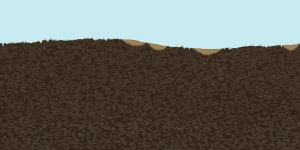Has anyone noticed how long Crea is taking? I know I have! Just a few months ago I was certain I would have Crea more or less finished by now and yet here we are still months away from a reasonable release date. “Why is this?” is something I have been asking myself recently. What is making things take so long?
I looked behind me to what I have been working on over the last few months and then ahead of me to what I will be working on and the answer became clear. There has been multiple factors that are causing these delays such as a feature taking longer to implement than expected or completely overlooking a feature when I made the release date estimates. However, without a doubt, the largest contributor is the mistake of confusing functional as finished.
When we launched Crea’s Kickstarter I truly tried to make pessimistic estimates on the release dates. I was secretly hopeful that the stars would align and Crea would come out even sooner. After all, I had the basic exploration working along with world generation, character creation, crafting, user interface, and many other things. That means I was done with these and only have to look forward to the remaining features, right? Note quite.
As it turns out, function is not finished. Many of these features only had the bare necessities implemented and were by no means ready for prime time. Take the world generation for example. Back in June it did create a randomly generated world but, as it turned out, it was very hard to build onto these generated worlds. Even more pressing, the generation would take 45 seconds for a small world and I was too scared to try a large world that is 8 times larger than the small. For some time I closed my eyes and marched on as if the problem would magically go away. It didn’t.
There are several other examples. The user interface was difficult to build onto and hardly moddable. The crafting was missing the concept of recipes the player would learn. The networking is too slow and probably needs to be moved from TCP to UDP, a major rewrite of the networking code. Add all of these up and you have a few months of added development.
This is not all bad news though. With every upgrade, Crea gets that much better. I want to ensure that Crea is representative of my best work. I do plan to release Crea before some minor features have been finished, but the features I do release with I want to be polished and ready to be built onto.
…So when is Crea coming out?



